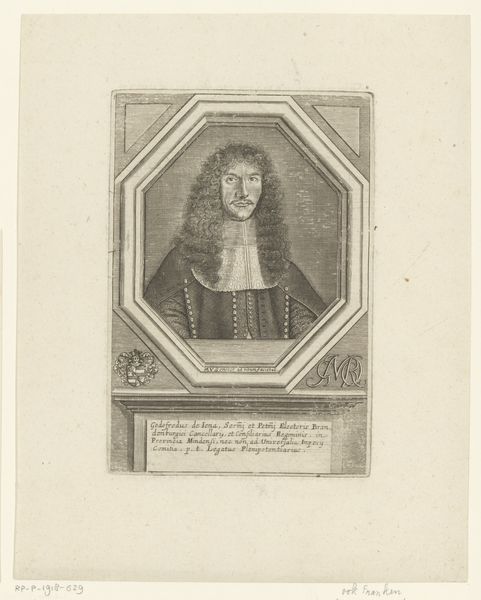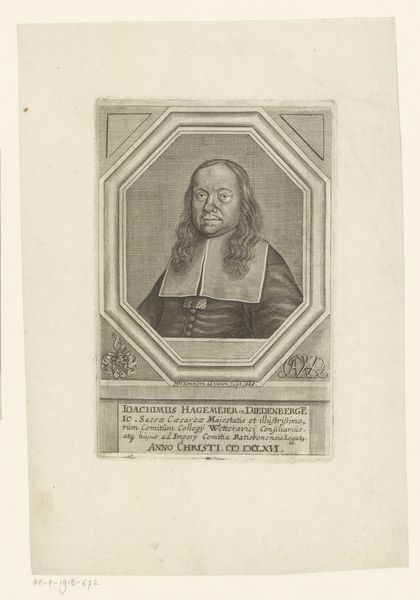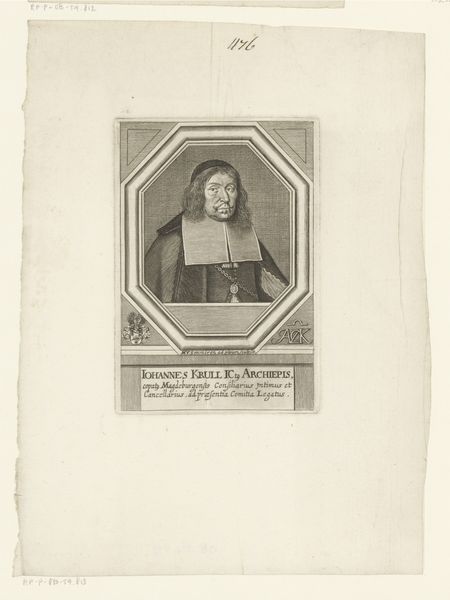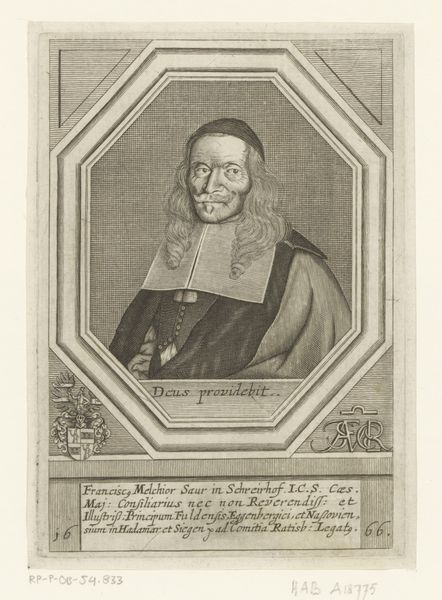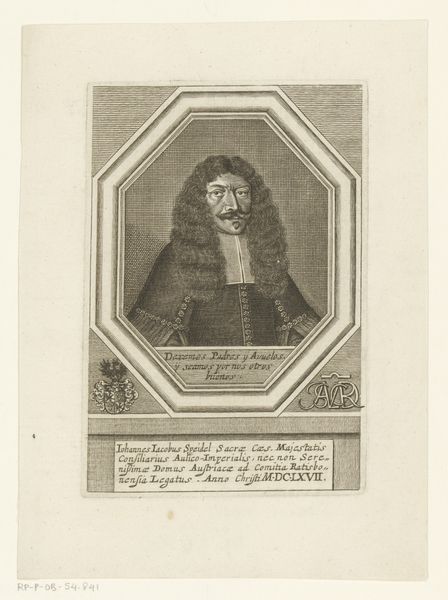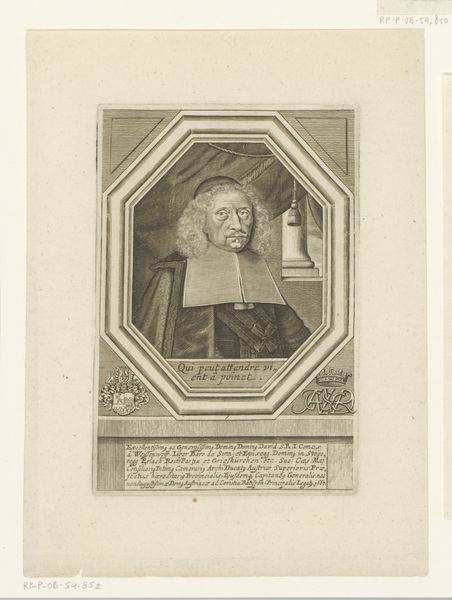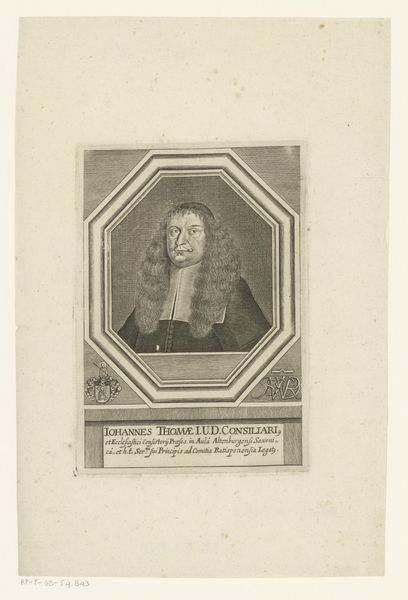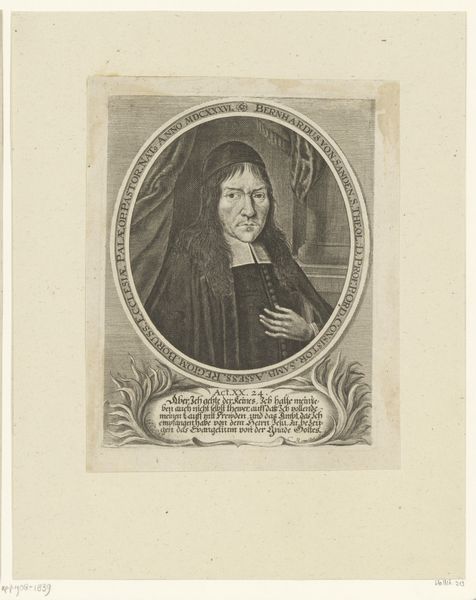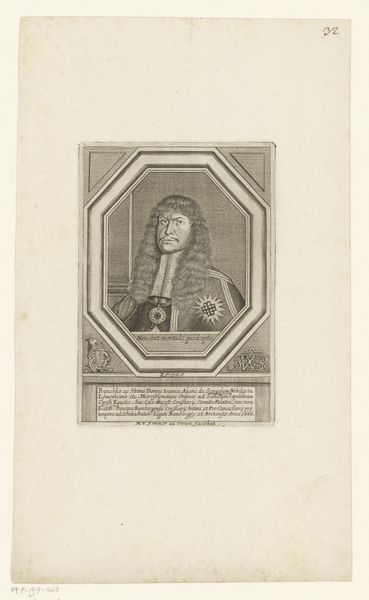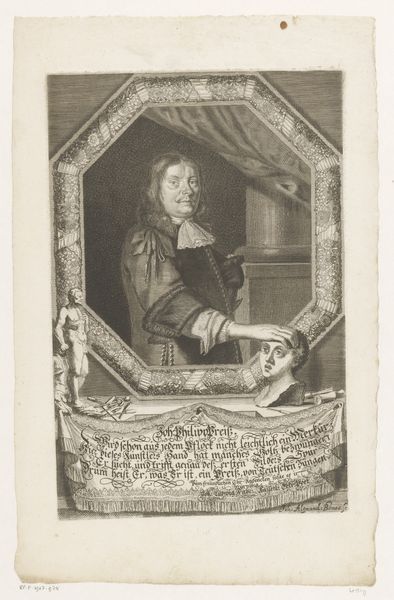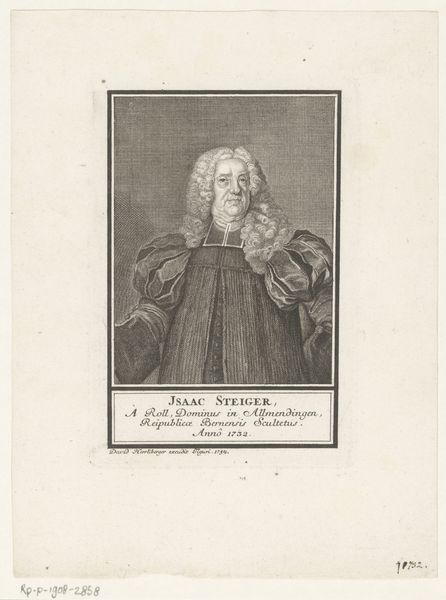
engraving
#
portrait
#
baroque
#
old engraving style
#
history-painting
#
engraving
Dimensions: height 154 mm, width 106 mm
Copyright: Rijks Museum: Open Domain
Curator: Welcome. We are looking at the "Portrait of Carl Ferdinand von Seeau," an engraving dating back to around 1667 by Matthias van Sommer. Editor: Immediately, the stark contrast and rigid lines catch the eye. It's almost austere, framed so meticulously within that octagonal border. Curator: The man represented held significant political roles as suggested by the text below the portrait. Consider how this artwork acts as both an intimate representation and a declaration of societal standing in Baroque-era Europe. It would be insightful to understand his involvement within the landscape of Westphalia's political theatre and appreciate how the very creation of this piece solidified his importance within these circles. Editor: Interesting. My focus, however, veers toward the visual language employed. Notice the stark linearity of the engraving technique itself. Each stroke serves to define form, create texture – especially in the depiction of lace and hair. Do you think the medium shapes our understanding of its purpose and period? Curator: Absolutely! The engraving, as a reproductive medium, had implications for access and dissemination of information during this era. Portraiture like this cemented existing power structures and class stratifications—but this format could reproduce multiple versions across political boundaries. It shaped popular perception just as much as artistic innovation does. Editor: Precisely! Observe how form and function intertwine. The careful arrangement of text and image emphasizes its propagandistic undertones; however, it's so elegant that we get captivated, and forget it. Curator: So, appreciating "Portrait of Carl Ferdinand von Seeau" today really needs a combined view. Its formal construction, combined with what we know about the sitter's historical importance, helps to unearth compelling intersections of power, identity, and representation of political people in art. Editor: Agreed. Recognizing both artistic strategies as well as sociopolitical elements woven into the artwork offers richer context for its enduring value and reception.
Comments
No comments
Be the first to comment and join the conversation on the ultimate creative platform.
